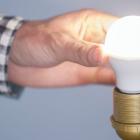Back to School - Back to Reducing Emissions
Submitted by Emily Boiteau on | Updated Sat, 17/09/2016 - 23:49

September is here, which means it is time for students of all ages to return to school. I am sure everyone is familiar with those classic “Back to School” advertisements from stores like Walmart or Staples, promoting great deals on supplies or the cool new gadget to help with your studies. I know when I was younger, my favourite part of the upcoming school year was shopping for new outfits or finding a binder or notebook with neat designs to impress my classmates with on the first day. At this point, I was not cognizant of the more eco-friendly alternatives available for school supplies or clothing. Having items such as recyclable crayons, recycled notebooks and paper, reused backpacks or clothing from older siblings or from a thrift store and even an energy efficient laptop completely slipped my mind!
EcoFriendly Supplies and Used Clothing
In Toronto, a store called Grassroots Environmental Products sells a variety of “green” products in many different categories, including office/school supplies. Items, like a 3-subject notebook, are made from post-consumer waste and are recyclable. With the notebook specifically, it is 100% recycled so no trees were cut down to make it.i Also on this website are items such as recycled rubber erasers, recycled PET pens, recycled office paper, bamboo rulers and recycled plastic calculators – there are tons of other school-related items that would be worth researching! Grassroots has an online store available for those who do not live in Toronto but who are interested in their products. Check out options available in other major stores to see the amount of post-consumer content used in the production of the respective product.
The benefits of recycling and using recycled products are widely known, but looking specifically at the use of recycled paper the benefits are fairly notable. For every 1 ton of recycled paper used, approximately 7 to 24 grown trees are saved.ii The number varies depending on the percentage of post-consumer content paper. Here is another calculation: for each ton of non-recycled copy, 2580 kg of CO2 are produced.iii In comparison, manufacturing paper from 100% post-consumer content reduces emissions by 38%, which would result in 1600 kg of CO2 emissions.iv
I completely understand that visualizing 1 ton of recycled paper is a bit challenging. One ton of paper equals 400 reams which equals 200,000 sheets.v If we say an average class holds 20 students and one exam is 6 pages that would be 120 sheets of paper for one exam. How many classes are in your school? How many exams do you have per class? What else do you use paper for: notes, reports, etc. I think it is pretty safe to say that your school could make an effort to use recycled paper and also to ensure that you are diverting waste by recycling as much as possible.
The environmental benefits of using recycled products, like notebooks and pens, are reason enough to make the change in your back-to-school shopping list.
As enticing as new clothing is, seeking out used clothing (and other used materials) will ultimately reduce the use of raw materials to make brand new items and reduce the emissions that come from manufacturing.vi In 2013, the EPA estimated that approximately 12 million tons of footwear, clothing and textiles were produced. Only 15% of that amount was recovered for reprocessing or recycling.vii Organizations like the Council for Textile Recycling are bringing awareness to removing textiles from landfills. By buying items from stores like the Kind Exchange in Toronto, Urban Thrift in Calgary, Value Village or Salvation Army basically anywhere or your own personal favourite thrift store, you are making a conscious effort to reduce the amount of manufacturing that goes into new products and also preventing used clothing from entering the landfills.
In addition to finding used clothing for your own use, there are many options for dropping off your own clothing for reuse. Eco Canada Textile Recycling is an example of a donation program for used clothing. They have drop boxes around the country where you can bring used clothing and each item brought is reused rather than being sent to a landfill. That is only one example of a clothing drop-off option – it is worth researching your local area to find a suitable option.
By reusing and recycling clothes, varying amounts of CO2 can be saved. It is estimated that one adult outfit weighs (on average) 1.8 kg (or about 4 lbs).viii The Gaia Movement Trust estimates that buying one outfit second-hand will save about 11 kg of CO2 and that recycling one outfit into fibres will save around 3 kg.ix Imagine you are getting ready for a new year and buying 5 new outfits. If you chose to purchase these clothing items second-hand, that would save around 55 kg of CO2 which is equivalent to the emissions from a passenger vehicle from driving 210 km.x Imagine if you were able to replace an even larger portion of your back-to-school wardrobe with reused items!
Energy-Star Rated Laptops
What is Energy-Star, you may ask? Well, it is an EPA rating for laptops with certain power management features.xi This includes sleep mode after periods of inactivity and an efficient power supply. Buying an Energy-Star rated laptop for your school year is a great way to use less electricity (as they use less energy) and thus reduce the amount of CO2 emissions created by electricity production.xii
If you decide to purchase a laptop with the Energy-Star power management features, you could potentially save approximately 500 kWh of electricity annually. This amount of electricity savings reduces CO2 emissions into the atmosphere; the amount of greenhouse gases that could be reduced is equivalent to taking your vehicle off the road for 3 weeks.xiii A fairly staggering statistic is that if all computers sold in the USA were Energy-Star rated, the amount of greenhouse gas emissions that would be reduced would be equivalent to the emissions from 1.4 million vehicles.xiv A variety of brands now have Energy-Star certified laptops, including Dell, HP and Lenovo.xv Take a look the next time you’re at an electronics store – think of the CO2 emissions that you will be reducing!
If you already have a laptop or desktop computer, there are a couple energy-saving tips that you should be keeping in mind (if you don’t already). In an informative article in The Simple Dollar, the author suggests changing your computer settings so it shuts off every night. They estimate that a computer may use 80 watts per hour and that a monitor not receiving a signal uses 5 watts per hour. Thus, a computer that is turned off rather than sitting idle saves 75 watts per hour. If your computer is left on accidently at night 3 times a week (estimate 24 hours) for a whole year, that would be 1248 hours of energy being wasted. Multiplying that by 75 watts of energy is 93.6 kWh. The emissions for producing that amount of electricity is equivalent to the emissions from driving 248 km. That could all be saved if you just remember to turn off your computer each night!
Along with shutting off your computer each night, the author suggests putting timers on your laptop charger so you can plug it in and not have to worry about wasting energy once it is charged. Another idea is to alter your brightness settings on your monitor to reduce the amount of energy needed and reducing the amount you may need to charge your computer.
Although a majority of your back-to-school shopping may have already been accomplished, here are some ideas for items you haven’t purchased yet or maybe for items you will need in your second term. By making even minor changes in your back-to-school purchases, you are making an active effort in reducing your carbon footprint!
i “New Leaf Jr. 3-Subject Recycled Notebook”, Grass Roots, accessed September 13, 2015, https://www.grassrootsstore.com/New_Leaf_Jr_3_Subject_Recycled_Notebook_....
ii “About the coop”, Recycled Products Cooperative, accessed September 13, 2015, http://www.recycledproducts.org/join.html#wr.
iii "Paper Facts", accessed September 13, 2015, http://cua6.urban.csuohio.edu/~sanda/syl/envpol/materials/GREEN%20FACTS.pdf.
iv “Reducing CO2 and Greenhouse Gases”, Recycled Papers, accessed September 21st, 2015, http://recycled-papers.co.uk/green-matters/why-use-recycled-papers/co2-a....
v"Paper Facts", accessed September 13, 2015, http://cua6.urban.csuohio.edu/~sanda/syl/envpol/materials/GREEN%20FACTS.pdf.
vi “Climate Change in the Pacific Southwest – Waste Management”, EPA, accessed September 11, 2015, http://www.epa.gov/region9/climatechange/waste.html.
vii “Textiles”, EPA – Wastes, accessed September 11, 2015, http://www.epa.gov/wastes/conserve/materials/textiles.htm.
viii “Housing – Students”, Grand Valley State University, accessed September 21, 2015, https://www.gvsu.edu/housing/students/how-much-laundry-is-a-full-load-58....
ix Gaia Movement Trust, accessed September 21, 2015, http://www.gaia-movement.org/Article.asp?TxtID=534&SubMenuItemID=103&Men....
x “Greenhouse Gas Equivalencies Calculator”, USA EPA, accessed September 21, 2015, http://www.epa.gov/cleanenergy/energy-resources/calculator.html#results.
xi “Energy Efficiency”, Challenge for Sustainability, accessed September 11, 2015, http://challengeforsustainability.org/toolkit/energy-efficiency/computer....
xii “Energy Efficiency”, Challenge for Sustainability, accessed September 11, 2015, http://challengeforsustainability.org/toolkit/energy-efficiency/computer....
xiii “What is Energy Star?”, Dell, accessed September 11, 2015, http://www.dell.com/downloads/global/products/optix/EnergStar5.0_SpecShe....
xiv “Computers for Consumers”, Energy Star, accessed September 11, 2015, http://www.energystar.gov/products/certified-products/detail/computers.
xv “Energy Star Certified Computers”, Energy Star, accessed September 11, 2015, http://www.energystar.gov/productfinder/product/certified-computers/results.
You will save the Earth by sharing and/or tweeting (corny right?)





